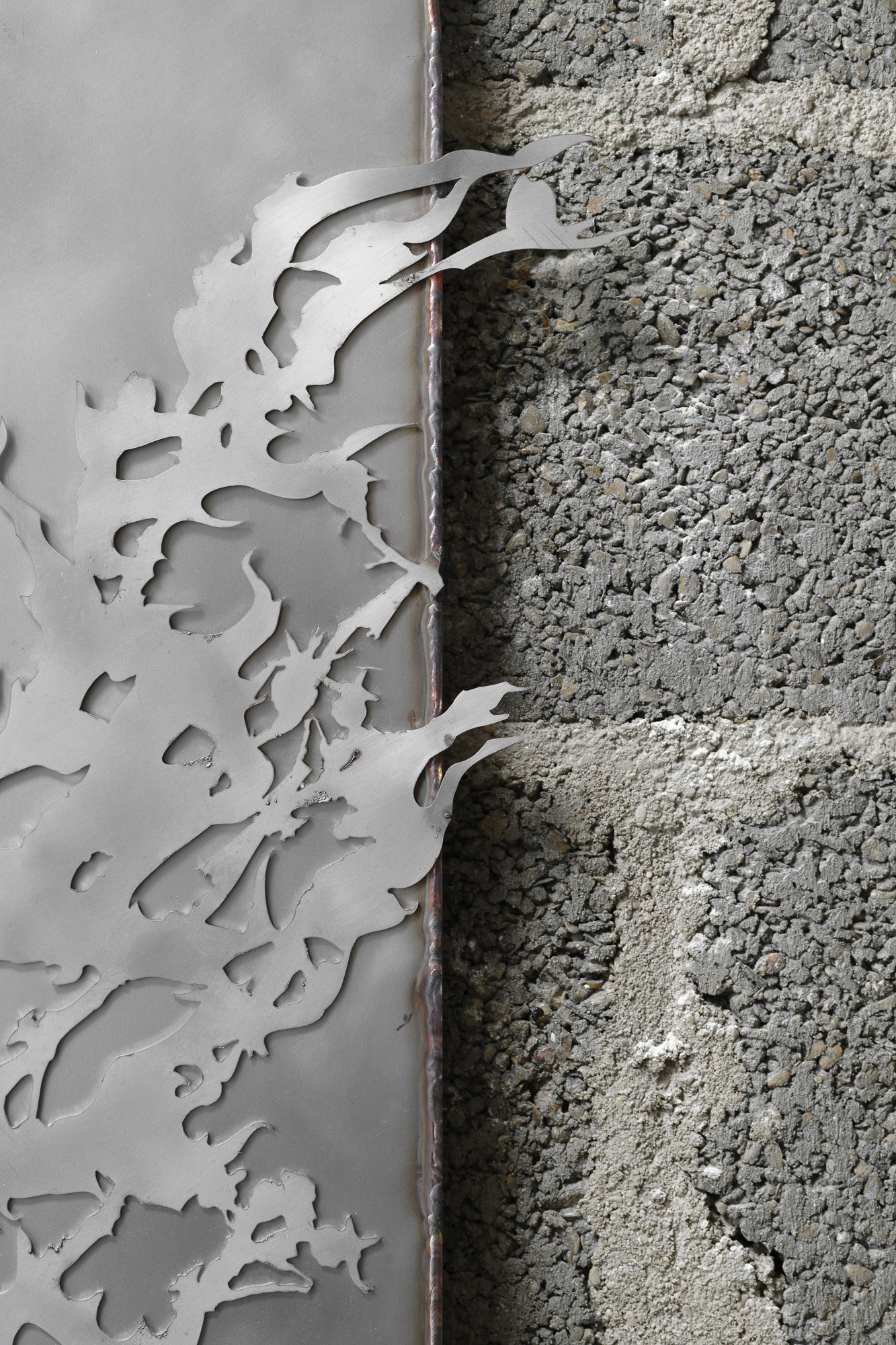Artist: Inside Job
Title: In Flames
Venue: Lily Robert, Paris
Text: Indira Béraud
Photos: Aurélien Mole
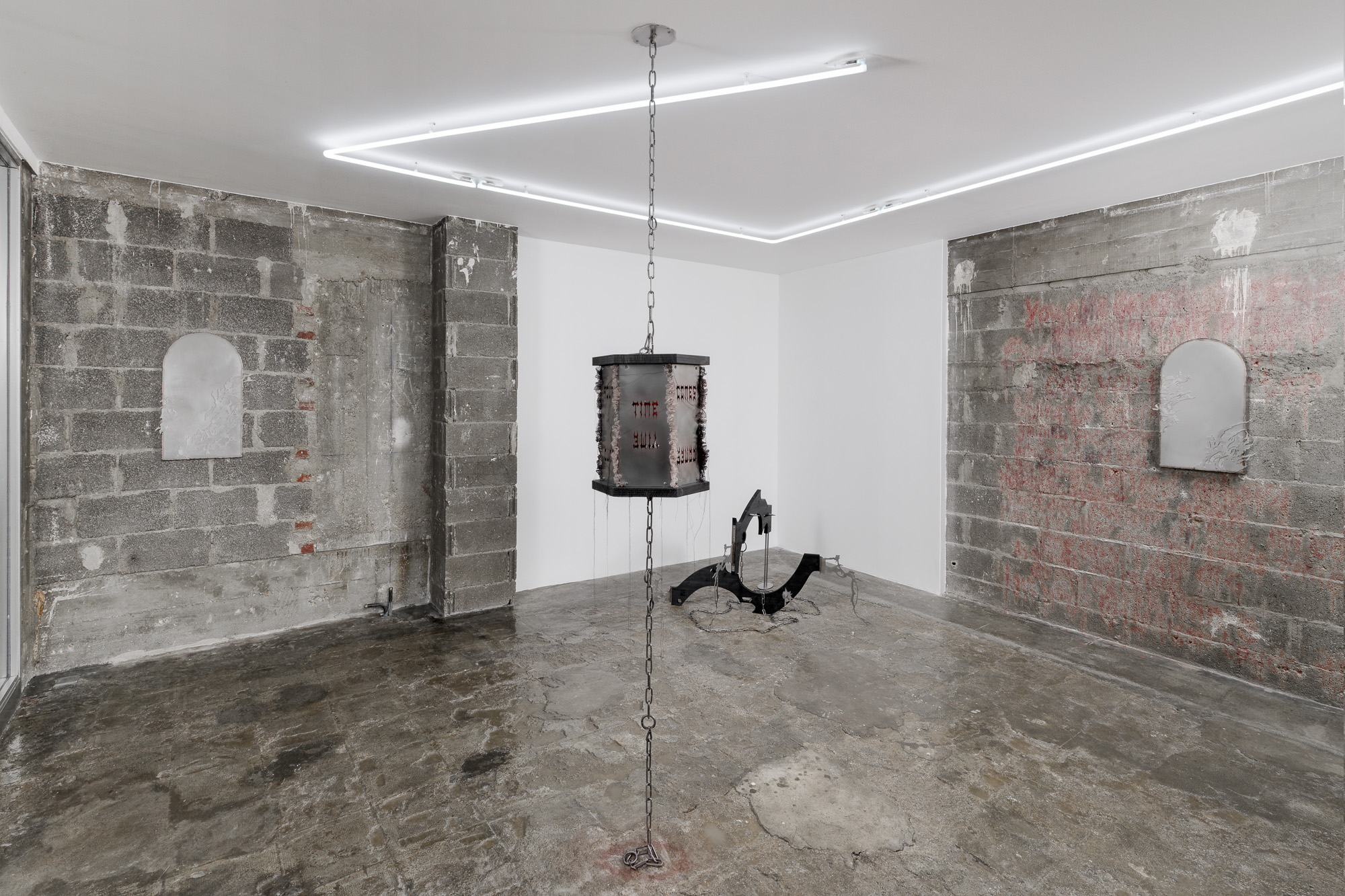
At a galloping pace, raging fires mark the landscape like a red-hot iron. Soils are scorched, skies painted with toxic smoke. With this before us, no one can ignore the impact of climate change. An upward trend of conflagration risk rings loud and clear, resulting in a global increase in terrestrial temperatures — the symptom of a relentless economy. Entitled “In Flames,” the first solo show in France by Polish artists Ula Lucińska and Michał Knychaus, working as a duo under the pseudonym Inside Job, presents the fateful remains of a charred world. Conceived under a speculative vision, the exhibition poses the eminent question of the future of our civilization — what will remain, what will survive.
Thus, everything that populates the space seems to come from an era that is or will soon be over: first that of Fordism, followed by a post-Fordism, globalized. The works resemble spare parts or mechanical instruments straight out of factories. Cables, curtains of chains and industrial materials refer to the pictorial field of the machine — an alienating machine, increasing the rate, the demands, the cycles of production and consumption. On the ground lies The Serpent, an charcoal-colored sculpture with menacing forms — sharpened, merciless, spikes protruding —, it could very well be mistaken for a trap, a vice ready to close in on a captive member. But the body, if it is summoned, shines by its absence. Mirror in Flames, for example, does not reflect the visitor. One can simply detect a few delicate nuances and flickers of light, its metal polished down to a matte and satin finish. The artifacts testify above all to a lost humanity, engulfed in the ruins of capitalism.
Anna Tsing dedicated an essay (The mushroom of the end of the world. On the Possibilities of Living in the Ruins of Capitalism, 2015) to the global supply chains of matsutake, a wild mushroom that thrives in zones of ecological destruction. In it, she tells stories of renewal that overlap with those of decline. In the work of Inside Job, we observe a motif of thorny stems specific to the thistle. A plant known for its tenacity, it too takes root in these destroyed landscapes, where almost nothing remains. The metallic, hostile, sharp ornaments are marked by a gothic style. Renaissance of the Medieval, the Gothic crystallizes the way in which the rationality of the Enlightenment can capsize in human servitude. The vegetal adornments thus contaminate the rooms, not unlike in Hubert Robert’s paintings of ruins where vegetation proliferates, serving as a symbol of resurrection, of the cycle of life that never runs out.
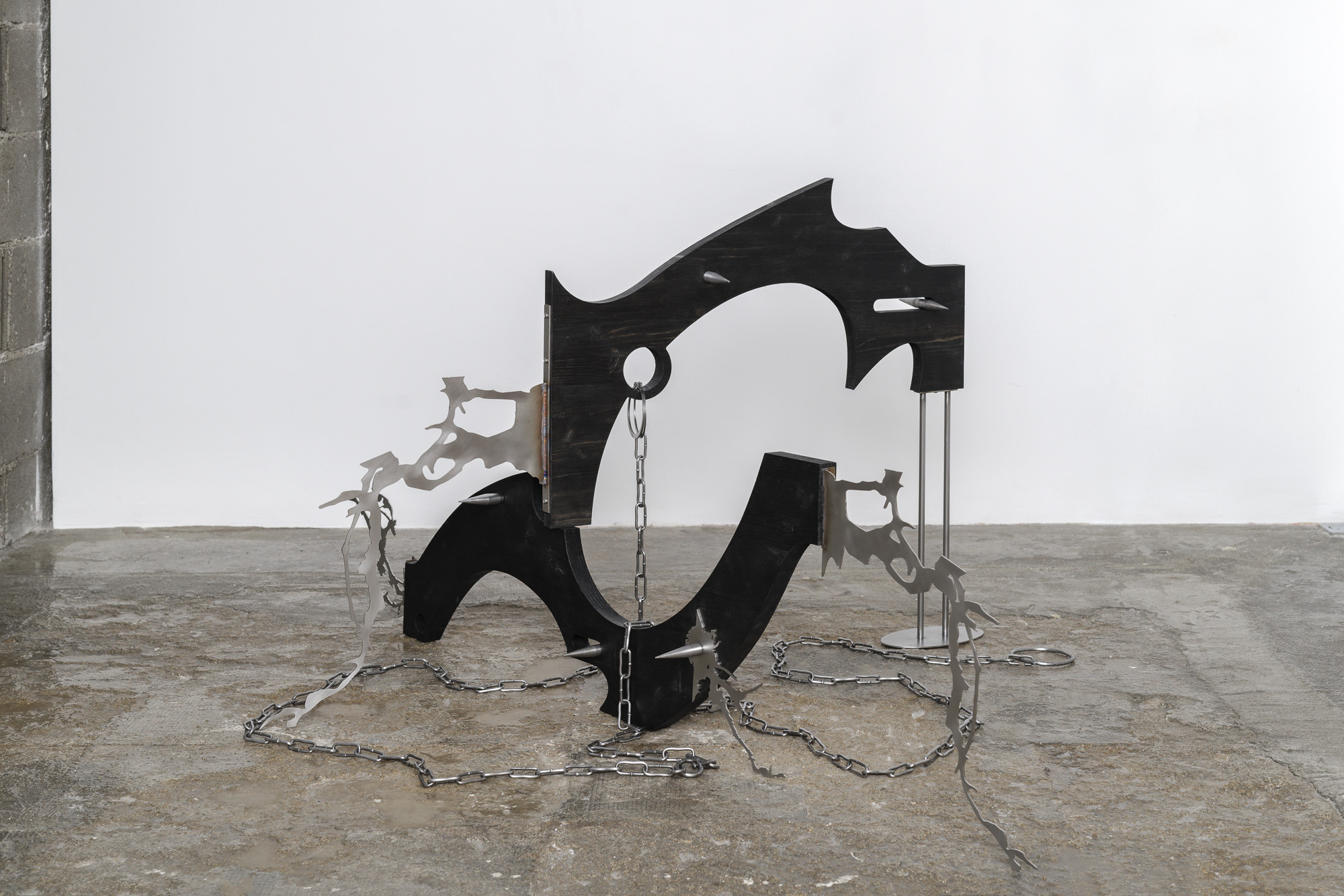
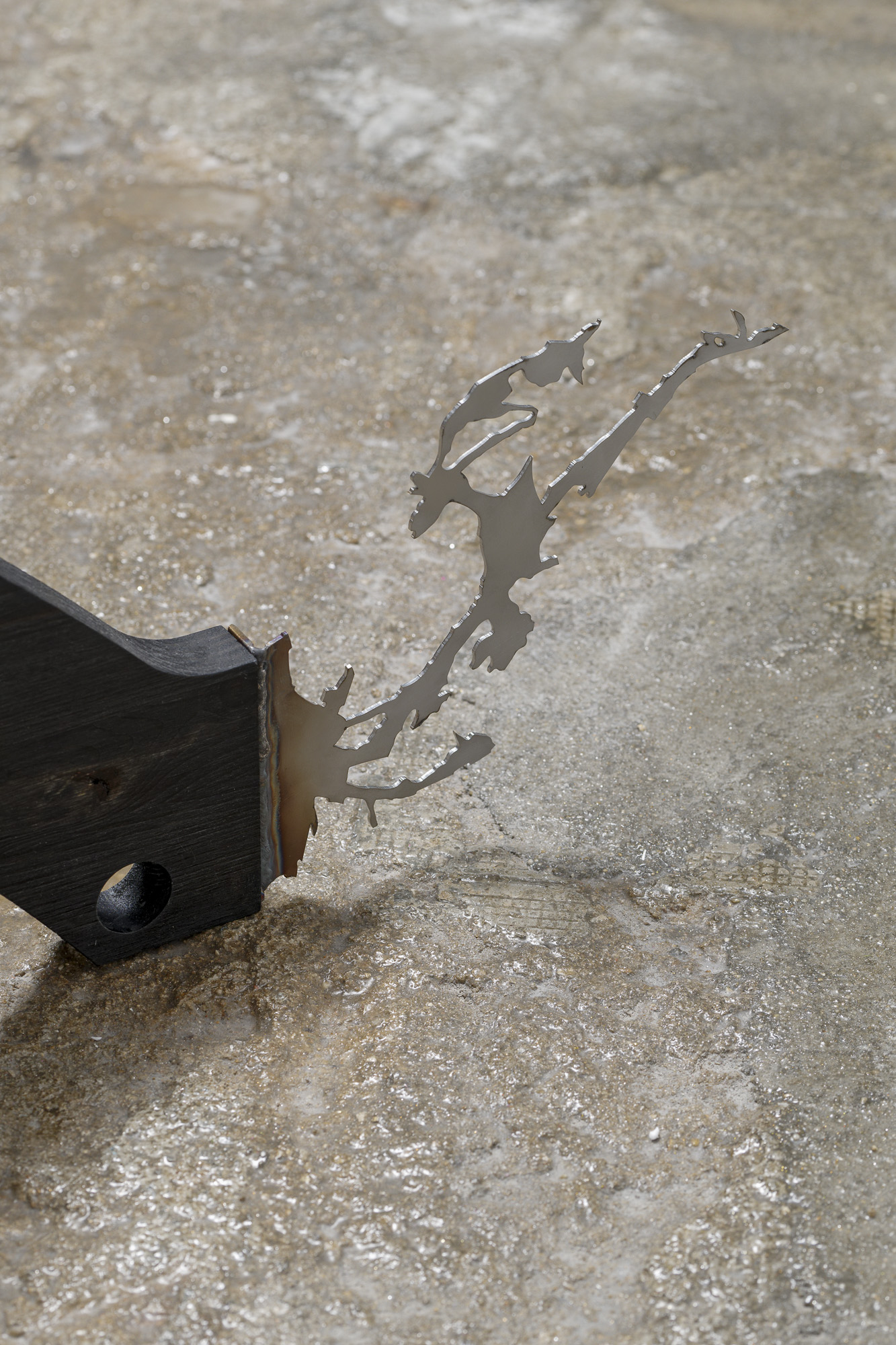
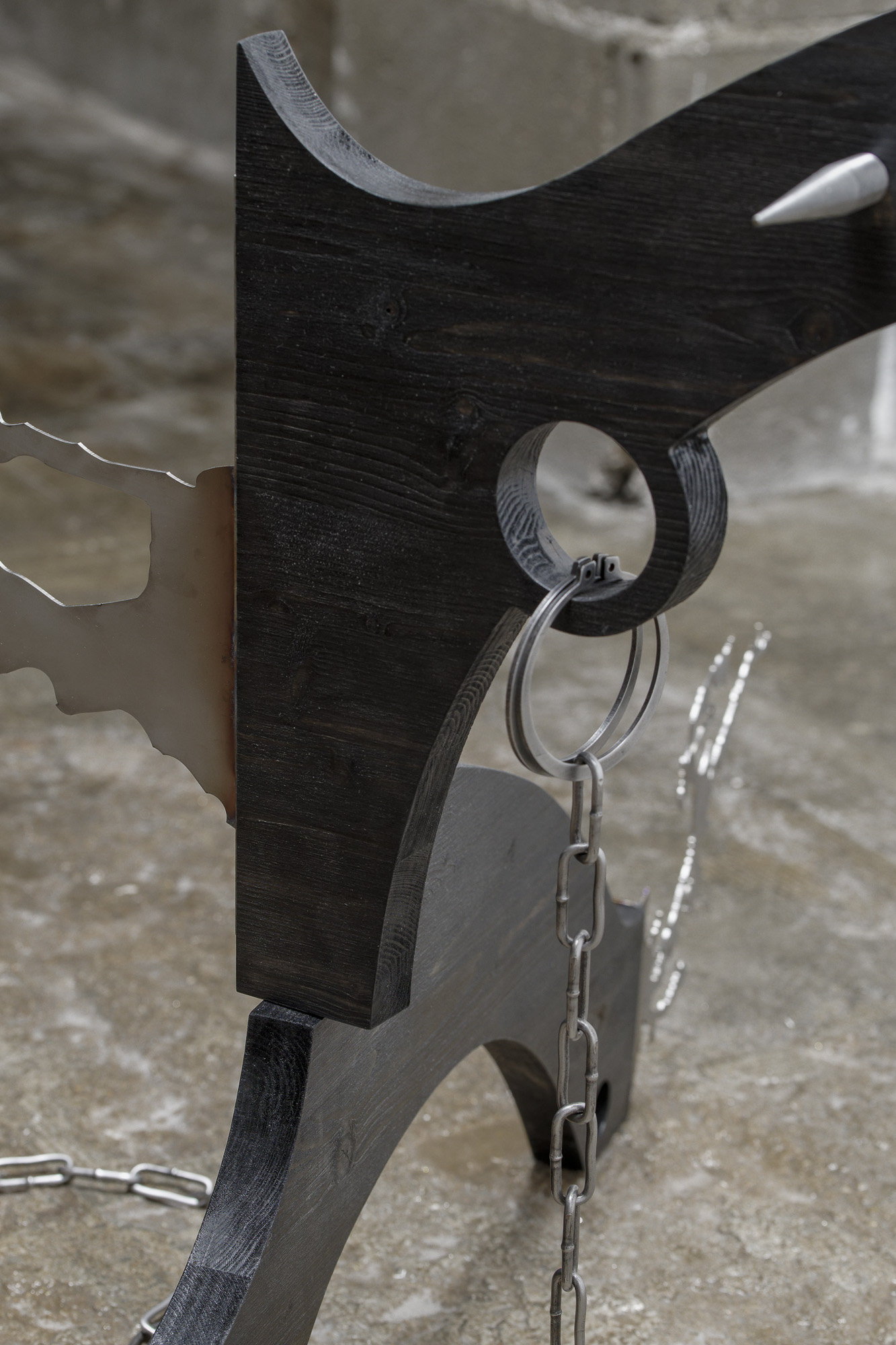
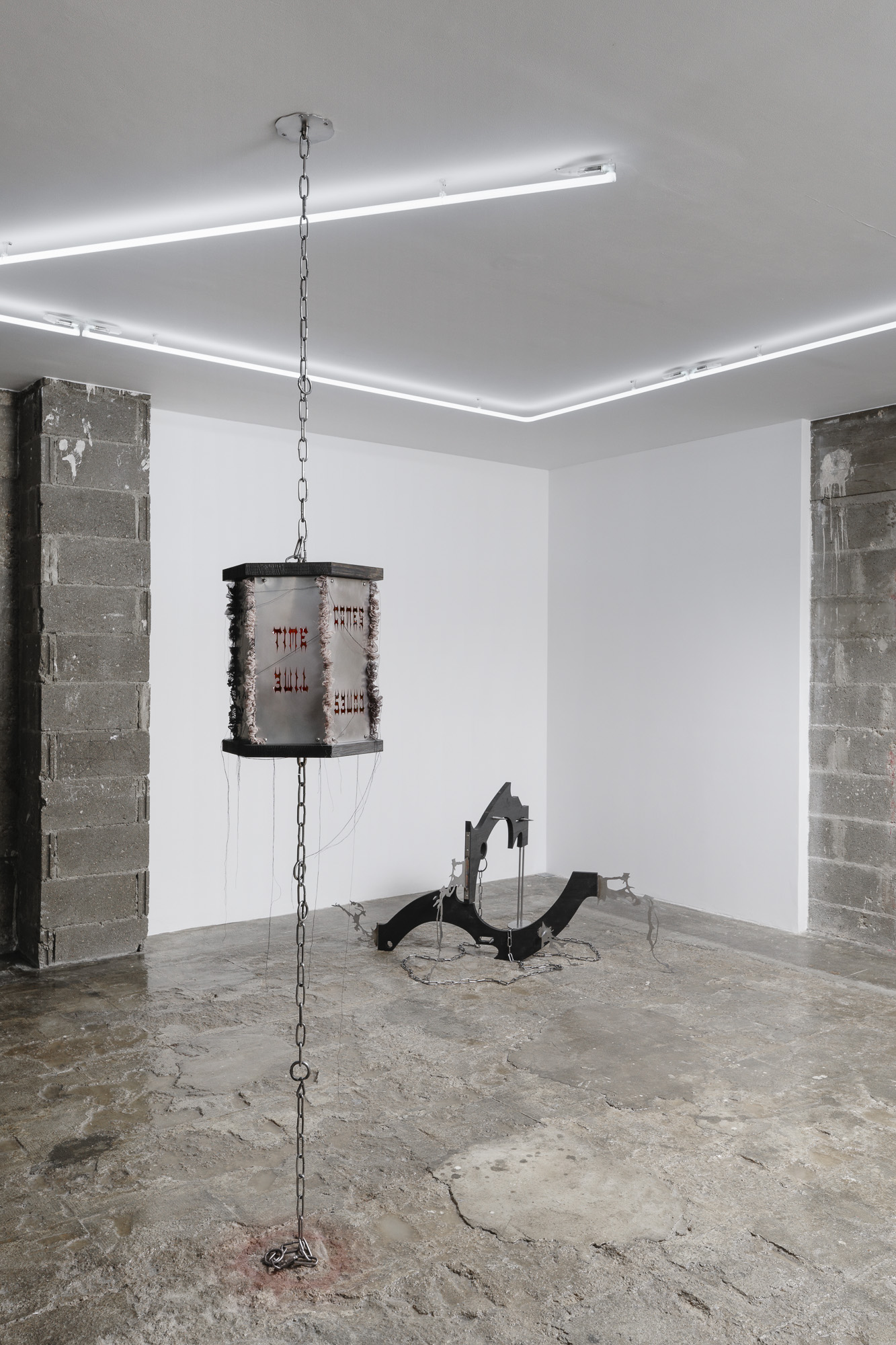
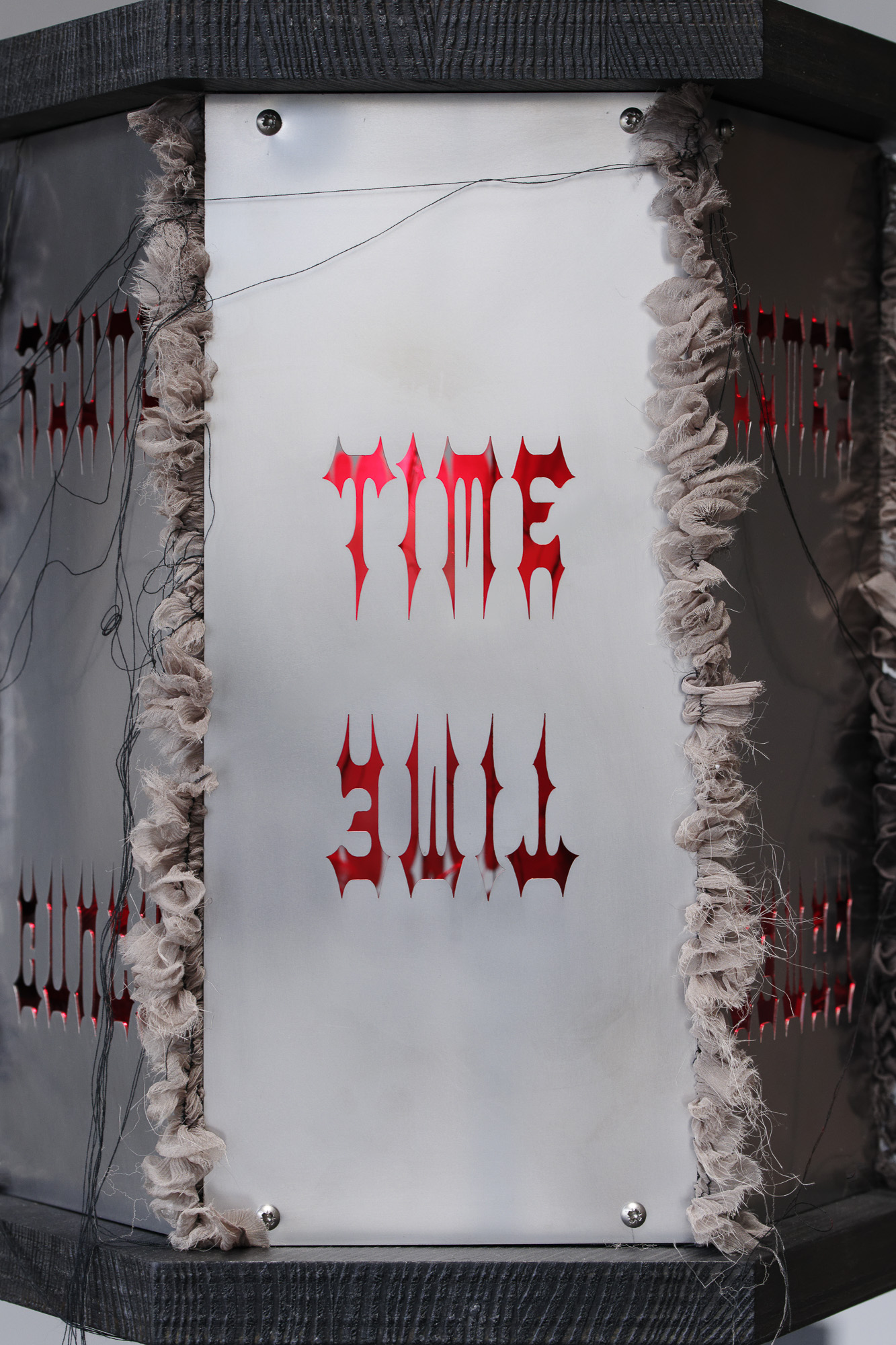
The question of the cycle, of a temporality constantly renewed — and not linear, as we tend to think of it — is addressed through Kerosene, a hexagonal lantern suspended from the ceiling. At nightfall, the work illuminates, diffusing onto the walls the inscription “Time comes round”. A twilight hue drapes the gallery, transforming it into a playground for zombies. The silhouette of Mirror in Flames evokes that of funerary tombs from which the dead would emerge. A figure of morbid reminiscence, the zombie returns from a previous era to attack the living. It is also the allegory of the consumer — as embodied in Jim Jarmusch’s film, The Dead Don’t Die (2019) —, of the enslaved worker or the spectator/user under the sway of media/technology, as Marshall McLuhan analyzed in 1969: “It is not an easy period in which to live, especially for the television-conditioned young who, unlike their literate elders, cannot take refuge in the zombie trance of Narcissus narcosis that numbs the state of psychic shock induced by the impact of the new media.”
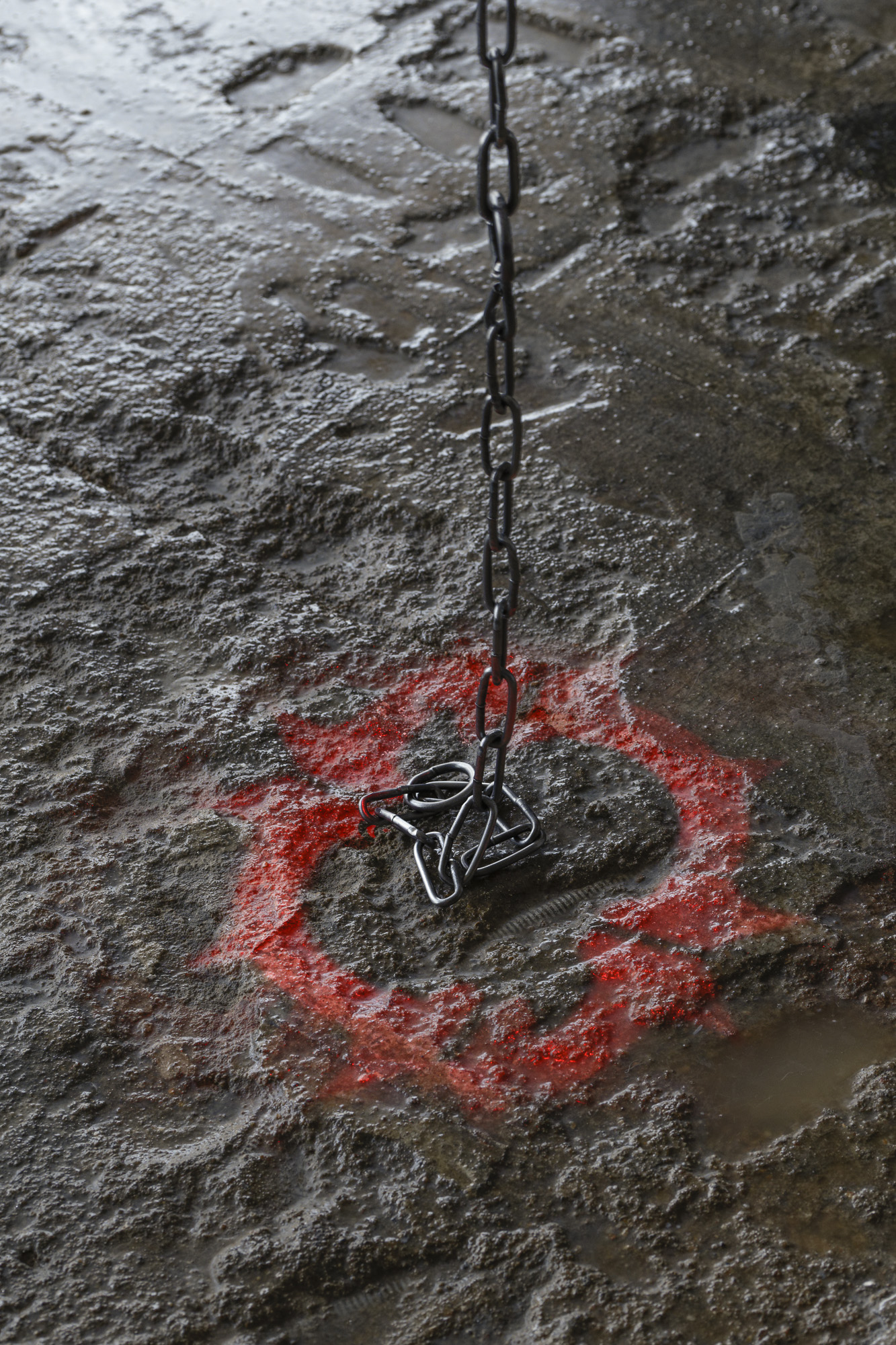
In an article entitled “The Agency of Fire: Burning Aesthetics”, the curator and art critic T.J. Demos reviews the proliferation of images of cataclysms circulating in the media. He underlines the scopic delight that they provoke in the spectator, distanced and protected, a kind of delicious horror à la Edmund Burke. The drama would seem to be under control, reduced to a framed, aestheticized, frozen image. Here, the artists take the counter to this approach, propelling the visitor into this post-apocalyptic landscape, provoking a hint of nostalgia via anticipation.
Text by Indira Béraud


